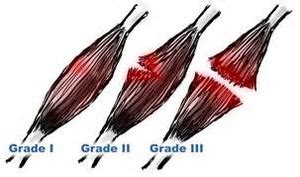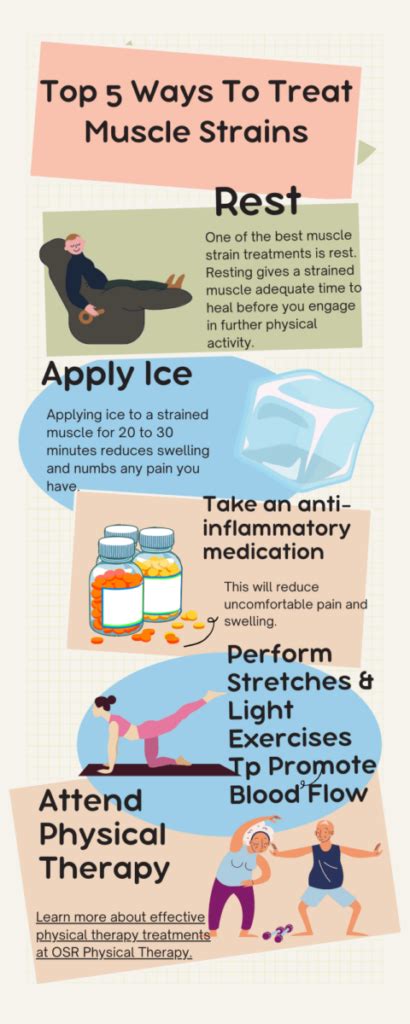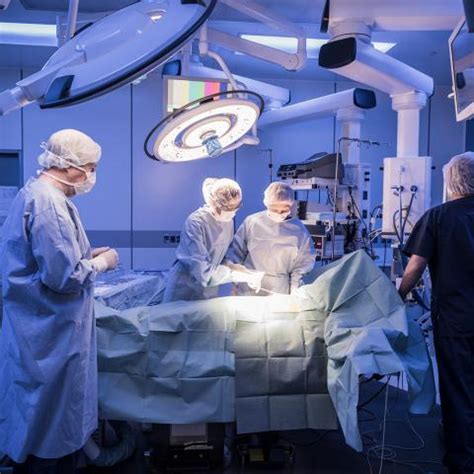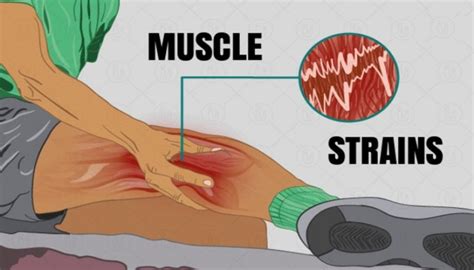Intro
Discover effective strained muscle treatment options, including physical therapy, pain relief, and recovery techniques to alleviate muscle soreness and inflammation, promoting healing and rehabilitation for optimal muscle health.
Muscle strains are a common injury that can occur to anyone, regardless of their age or physical activity level. They can be painful and debilitating, making it difficult to perform daily activities. Fortunately, there are various strained muscle treatment options available to help alleviate symptoms and promote recovery. In this article, we will discuss the importance of seeking proper treatment for muscle strains and explore the different treatment options available.
Muscle strains can be caused by a variety of factors, including overstretching, direct blows, or sudden contractions. They can range from mild to severe and can affect any muscle in the body. If left untreated, muscle strains can lead to further complications, such as chronic pain, limited mobility, and decreased strength. Therefore, it is essential to seek medical attention if you suspect you have a muscle strain.
The symptoms of a muscle strain can vary depending on the severity of the injury. Common symptoms include pain, swelling, bruising, and limited mobility. In severe cases, muscle strains can cause muscle spasms, numbness, or tingling. If you are experiencing any of these symptoms, it is crucial to seek medical attention to determine the best course of treatment. Early intervention can help prevent further complications and promote a speedy recovery.
Understanding Muscle Strains

Causes of Muscle Strains
Muscle strains can be caused by a variety of factors, including: * Overstretching or overuse * Direct blows or trauma * Sudden contractions or muscle spasms * Poor posture or body mechanics * Weak or imbalanced muscles * Poor warm-up or cool-down techniquesTreatment Options for Muscle Strains

Physical Therapy for Muscle Strains
Physical therapy can play a crucial role in the treatment and recovery of muscle strains. A physical therapist can help: * Improve range of motion and flexibility * Strengthen the affected muscle and surrounding muscles * Enhance proprioception and balance * Develop a personalized exercise program to promote recovery and prevent future injuriesSurgical Treatment Options

Recovery and Rehabilitation
Recovery and rehabilitation are critical components of muscle strain treatment. A comprehensive rehabilitation program should include: * Pain management and inflammation control * Range of motion and flexibility exercises * Strengthening exercises to improve muscle strength and endurance * Proprioception and balance training * Functional activities and sports-specific trainingPrevention of Muscle Strains

Importance of Early Intervention
Early intervention is crucial in the treatment and recovery of muscle strains. Delaying treatment can lead to further complications, such as chronic pain, limited mobility, and decreased strength. If you suspect you have a muscle strain, it is essential to seek medical attention to determine the best course of treatment.Conclusion and Next Steps

We invite you to share your thoughts and experiences with muscle strains in the comments below. Have you ever had a muscle strain? What treatment options did you use, and how did you recover? Your feedback and insights can help others who are experiencing similar injuries.
What are the symptoms of a muscle strain?
+The symptoms of a muscle strain can vary depending on the severity of the injury. Common symptoms include pain, swelling, bruising, and limited mobility. In severe cases, muscle strains can cause muscle spasms, numbness, or tingling.
How can I prevent muscle strains?
+Preventing muscle strains is essential to avoid the pain, limited mobility, and decreased strength associated with these injuries. Prevention strategies include warming up and cooling down properly, stretching and foam rolling to improve flexibility, strengthening exercises to improve muscle strength and endurance, proper posture and body mechanics, and avoiding overuse or repetitive activities.
What are the treatment options for muscle strains?
+There are various treatment options available for muscle strains, ranging from conservative to surgical. Conservative treatment options include rest, ice, compression, and elevation (RICE), pain management with medication or physical therapy, physical therapy to improve strength and flexibility, and bracing or immobilization to support the affected muscle. In severe cases, surgical intervention may be necessary to repair the damaged muscle.
